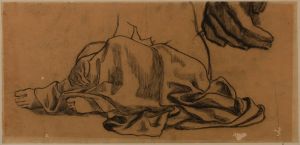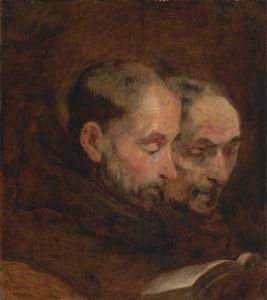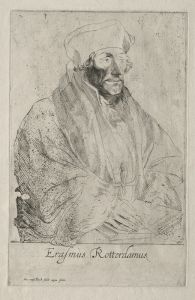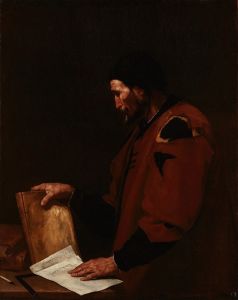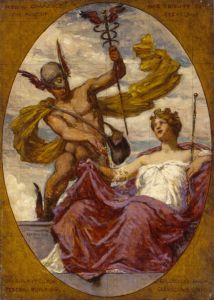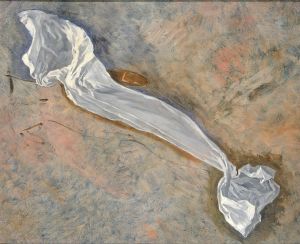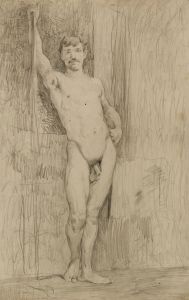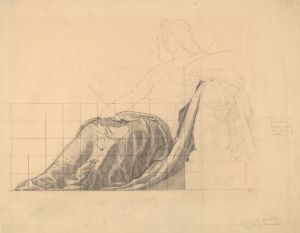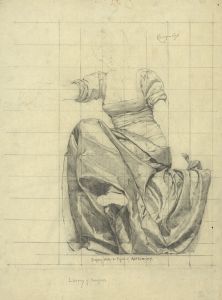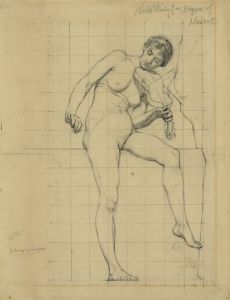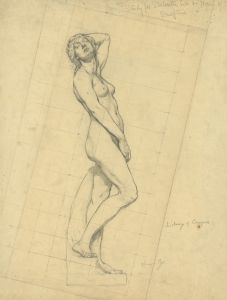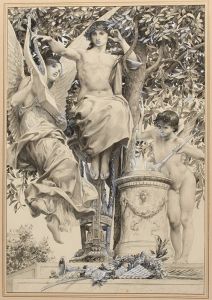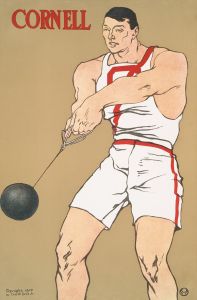
Drapery study for figure of Mathematics
A hand-painted replica of Kenyon Cox’s masterpiece Drapery study for figure of Mathematics, meticulously crafted by professional artists to capture the true essence of the original. Each piece is created with museum-quality canvas and rare mineral pigments, carefully painted by experienced artists with delicate brushstrokes and rich, layered colors to perfectly recreate the texture of the original artwork. Unlike machine-printed reproductions, this hand-painted version brings the painting to life, infused with the artist’s emotions and skill in every stroke. Whether for personal collection or home decoration, it instantly elevates the artistic atmosphere of any space.
Kenyon Cox (1856–1919) was an American painter, illustrator, muralist, and writer, known for his academic style and contributions to public art in the United States. One of his notable works is the "Drapery Study for Figure of Mathematics," which is a preparatory drawing for a larger mural project. This study exemplifies Cox's meticulous approach to composition and his dedication to classical techniques.
Cox was born in Warren, Ohio, and studied at the Pennsylvania Academy of the Fine Arts before moving to Paris to further his education at the École des Beaux-Arts. Under the tutelage of renowned artists like Jean-Léon Gérôme, Cox developed a strong foundation in academic art, which emphasized realism, attention to detail, and classical themes. Upon returning to the United States, Cox became a prominent figure in the American art scene, particularly known for his murals and allegorical works.
The "Drapery Study for Figure of Mathematics" is a testament to Cox's skill in rendering fabric and form. Drapery studies are an essential part of the academic art tradition, allowing artists to explore the way fabric interacts with the human body and light. These studies are often used to prepare for more complex compositions, ensuring that the final work achieves a sense of realism and harmony.
This particular study was created as part of Cox's preparation for a mural in the Library of Congress in Washington, D.C. The mural, which is part of a series, was commissioned to adorn the library's interior and celebrate the achievements of human knowledge and understanding. The figure of Mathematics, along with other allegorical figures, was intended to symbolize the intellectual pursuits that underpin civilization.
In the "Drapery Study for Figure of Mathematics," Cox demonstrates his ability to capture the fluidity and weight of fabric. The study likely involved a live model draped in cloth, allowing Cox to observe and replicate the intricate folds and shadows that give the fabric its lifelike appearance. This attention to detail is characteristic of Cox's work and reflects his commitment to the principles of academic art.
Cox's murals in the Library of Congress are celebrated for their classical beauty and intellectual depth. They represent a fusion of art and architecture, enhancing the grandeur of the library's Beaux-Arts design. The "Drapery Study for Figure of Mathematics" is an integral part of this artistic process, showcasing the preparatory work that underpins a successful mural.
Kenyon Cox's legacy extends beyond his murals and paintings. He was also a prolific writer and critic, advocating for the importance of traditional artistic values during a time of rapid change in the art world. His work, including studies like the "Drapery Study for Figure of Mathematics," continues to be appreciated for its technical excellence and its embodiment of the ideals of the American Renaissance, a period that sought to elevate American art and culture to new heights.
In summary, the "Drapery Study for Figure of Mathematics" by Kenyon Cox is a significant example of academic art, reflecting the artist's dedication to classical techniques and his role in the development of American mural painting. Through this study, Cox contributed to the rich artistic heritage of the United States, leaving a lasting impact on the nation's cultural landscape.






